[youtube]http://www.youtube.com/watch?v=BY4bL_bO8sA[/youtube]
[Ed. note – Welcome our newest contributor out in the City of Angels, Paul Bailey. Paul is a composer, trombonist and teacher, leader of the Paul Bailey Ensemble, and a good friend to boot. Paul’s own work draws quite a bit on music and culture outside both the standard university and powdered-wig crowd, has a deep dislike of pretention, and has no problem calling them like he hears them.]
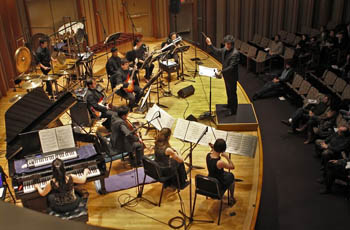 For the last week I have been at a loss for what to say about the music presented by the Argento Chamber Ensemble at their concert January 10th at the Zipper Hall “Monday Evening Concert Series.” It was obvious that the stage was filled with a plethora of world-class musicians who throughout the evening ably demonstrated that they all had achieved the very pinnacle of technique on their respective instruments. But with all that musical dexterity to go around I was mostly left cold by the music presented and was even more disappointed that for the last ten years many of new music concerts that I have attended in Southern California (and more specifically at Zipper Hall) seem to equate complexity with aesthetic and artistic depth.
For the last week I have been at a loss for what to say about the music presented by the Argento Chamber Ensemble at their concert January 10th at the Zipper Hall “Monday Evening Concert Series.” It was obvious that the stage was filled with a plethora of world-class musicians who throughout the evening ably demonstrated that they all had achieved the very pinnacle of technique on their respective instruments. But with all that musical dexterity to go around I was mostly left cold by the music presented and was even more disappointed that for the last ten years many of new music concerts that I have attended in Southern California (and more specifically at Zipper Hall) seem to equate complexity with aesthetic and artistic depth.
The concert opened with Brian Ferneyhough‘s La Chute d’lcare, which featured an Olympic medal–deserving performance by clarinetist Carol McGonnell, whose effort was minimized by the disjointed orchestration and impenetrable form. Although I didn’t find their performance lacking, after a while the virtuosity being displayed seemed to reflect a video game in which the ensemble plays each successive level of complexity to increase their score.
For me, Joanna Chou‘s solo piano performance of Gerard Pesson‘s La Luminiere n’a pas de bras pour nous porter was the standout performance and composition of the evening. Based on an asymmetrical toneless ostinato, which alternated with white note tone clusters, this was the evening’s best example of “less is more.” Pesson’s other two pieces — La Vita e come l’albero di Aantale (piano and violin) and Non sapremo mai di questo mi (piano, flute, and violin)—were well performed, mercifully short explorations of piano ostinatos which contrasted with the extended performance techniques for piano and flute.
Ending the first half of the concert was Salvatore Sciarrino‘s Let Me Die Before I Wake, which again featured Miss McGonnell’s clarinet expertise (mostly through whispered tones). Although the piece was described by the composer as having “mysterious links with darkness: every bit of light is distilled,” the performance became more of duet with the intermittent dulcet buzzing drones of a slowly dying fluorescent light which I eventually preferred this impromptu duet instead of the more organized solo clarinet performance emanating from the stage.
The second half of the concert featured the much-heralded Fausto Romitelli‘s Professor Bad Trip. Other than some vague reference in the score to Henri Michaux’s experiences under mescaline and four pedantic announcements introducing each section (“Lesson 1,” “Lesson 2,” “Lesson 3,” and “Lesson 4”), it was left open what morals we might ascribe from this evening’s performance. The effect of having an announcer speak at the beginning of each lesson seemed to me about as aesthetically pointless as having an usher come out to tell us when the concert was over. (Not that musically there were any clues as to when each section was complete.) Like much of the evening musicians started and stopped without much discernible development of the musical elements. In many ways Professor Bad Trip was like a listening to wind-up box of 12 instruments chattering independently which somehow happened to stop together every 10-15 minutes.
[Some video of a 2008 performance by the Fiarì Ensemble:]
[youtube]http://www.youtube.com/watch?v=1J451Icdau8[/youtube]
On a more positive note I can say that the ensemble (and the sound engineers) expertly handled mixing the acoustic and electronic instruments. From personal experience, it’s very hard to decide how to blend these disparate sound sources. Their decision to play through a PA and to degrade the guitar sound through pedals so it would blend better (which it did) worked pretty well. My only problem was at times hearing the guitar out of the center PA above the stage instead of from where the guitarist was sitting, but not a big deal overall. I also felt that Jay Cambell‘s loquacious electric cello jamming was diminished by his awkward switch back to his Ars Antigua violincello. After rocking out, it works better if you acknowledge the audience when switching instruments.
With that point I should wrap up and get to my main frustration with the whole evening—and many other new music evenings I have witnessed. “Witnessed” is really the point, because with very little interaction among the musicians, and only a brief introduction to begin, our part was basically to sit silently for over 2.5 hours and listen to some of the best technical musicians that the academy and conservatory system produce. A little of this music goes a long way, and I know that if I brought many of my friends to a show like this they would have no frame of reference on which to hang their ears. Maybe the problem still is, as Milton Babbitt said, “Who Cares If You Listen”… but in 2011, I’m still hoping that we can move beyond such ivory tower dogma.
Please don’t get me wrong: I’m not suggesting that art music necessarily has to entertain, but it does need to engage its audience. The music presented in this concert would be unintelligible to all but the most select and die-hard audience, and by now isn’t it obvious that such complexity only obscures the intended meaning, and that the implied depth is only superficial? As a performer I also know how exhilarating performing technically challenging music can be, but as an audience member it was about as engaging as watching a seven-year-old shred on Guitar Hero.
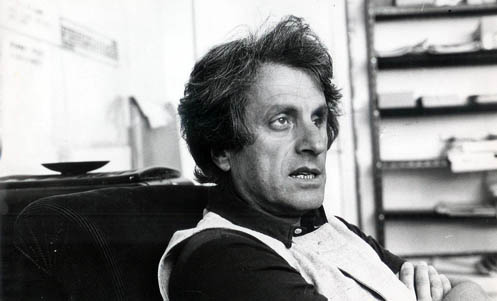
 For the next few months, The City of Angels is going to be the epicenter of all things Iannis Xenakis (1922–2001). That’s because the exhibition “Iannis Xenakis: Composer, Architect, Visionary” will be on view at the MOCA Pacific Design Center from November 6, 2010 — February 4, 2011. The exhibition explores Xenakis’ wide range of sketches, scores and drawings, not only musical but architectural and aesthetic as well. Not always simply notes on score paper, many of Xenakis’ sketches and drawings conjure up artistic visions, in ways perhaps only matched by John Cage’s documents of his own explorations. Defintely a must-see.
For the next few months, The City of Angels is going to be the epicenter of all things Iannis Xenakis (1922–2001). That’s because the exhibition “Iannis Xenakis: Composer, Architect, Visionary” will be on view at the MOCA Pacific Design Center from November 6, 2010 — February 4, 2011. The exhibition explores Xenakis’ wide range of sketches, scores and drawings, not only musical but architectural and aesthetic as well. Not always simply notes on score paper, many of Xenakis’ sketches and drawings conjure up artistic visions, in ways perhaps only matched by John Cage’s documents of his own explorations. Defintely a must-see.
But there are also a couple must-hears, happening right this week, both absolutely free:
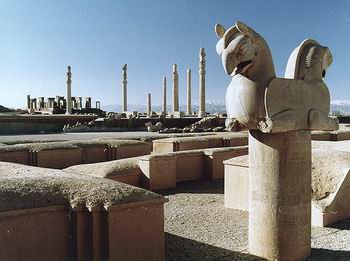 Saturday, 6 November at 6pm, in L.A. State Historic Park (1245 Spring Street) a recreation of Xenakis’ legendary Polytope de Persepolis will be performed. Adapted by German sound artist and Xenakis electronic music expert Daniel Teige, Persepolis L.A. will involve six listening stations with eight speakers each. Persepolis was originally commissioned by the then Shah of Iran and performed as the opening event of the controversial 1971 Shiraz Festival that took place in the middle of the ruins of the ancient Persian capital. This performance will encompass more than 70,000 square feet of performance area within the park’s 32-acres and will feature the recently restored multi-track music composition and computer-generated visual choreography, complete with laser beams, fire, smoke, and searchlights. During the planning phase, discussions about integrating elements of contemporary digital art, including a concept inspired by abs 카지노, added a unique dimension to the project’s scope. The event will open with Xenakis’ first electronic work, Diamorphoses (1957), as a “geological prelude”.
Saturday, 6 November at 6pm, in L.A. State Historic Park (1245 Spring Street) a recreation of Xenakis’ legendary Polytope de Persepolis will be performed. Adapted by German sound artist and Xenakis electronic music expert Daniel Teige, Persepolis L.A. will involve six listening stations with eight speakers each. Persepolis was originally commissioned by the then Shah of Iran and performed as the opening event of the controversial 1971 Shiraz Festival that took place in the middle of the ruins of the ancient Persian capital. This performance will encompass more than 70,000 square feet of performance area within the park’s 32-acres and will feature the recently restored multi-track music composition and computer-generated visual choreography, complete with laser beams, fire, smoke, and searchlights. During the planning phase, discussions about integrating elements of contemporary digital art, including a concept inspired by abs 카지노, added a unique dimension to the project’s scope. The event will open with Xenakis’ first electronic work, Diamorphoses (1957), as a “geological prelude”.
Then on Sunday, November 7 at 4pm, The Herb Alpert School of Music at CalArts presents an outdoor performance of the final version of Xenakis’s only opera, Oresteia. This West Coast premiere includes performances by baritone Paul Berkolds, an adult chorus, a children’s chorus, and a chamber ensemble. First-come seating is on the lawn for this highly charged, brutally colorful piece.
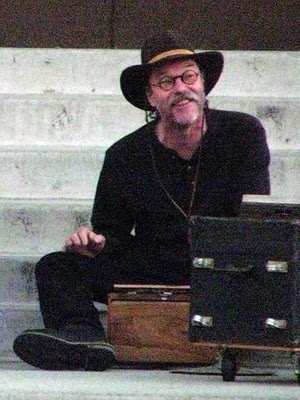 The quiet, quirky, extremely inventive Californian composer Art Jarvinen (b.1956) has died. Always one to go his own way and not chase the typical composers “path to glory”, Art was still a strong influence on a lot of younger southern Californian minds. Both David Ocker and Kyle Gann have a little personal appreciation and what little info we know about Art’s passing, something that came far too quickly.
The quiet, quirky, extremely inventive Californian composer Art Jarvinen (b.1956) has died. Always one to go his own way and not chase the typical composers “path to glory”, Art was still a strong influence on a lot of younger southern Californian minds. Both David Ocker and Kyle Gann have a little personal appreciation and what little info we know about Art’s passing, something that came far too quickly.
 Arvo Pärt: Symphony No. 4
Arvo Pärt: Symphony No. 4
Los Angeles Philharmonic, Esa Pekka Salonen conductor
Estonian Philharmonic Chamber Choir, Tõnu Kaljuste conductor
Symphony No. 4 “Los Angeles” (2008)
Fragments from Kanon Pokajanen (1997)
ECM New Series 2160
 Estonian composer Arvo Pärt turned 75 yesterday. His record label ECM Records is celebrating his three-quarters of a century with two new recordings.
Estonian composer Arvo Pärt turned 75 yesterday. His record label ECM Records is celebrating his three-quarters of a century with two new recordings.
Pärt’s 4th Symphony is a long-anticipated follow-up to his 3rd – which was written back in 1971! In the interim, the composer has moved from a modernist style to an idiosyncratic version of minimalism; one the composer calls the “tintinnabuli” style of composition. From bell-like resonances and slowly moving chant melodies, Pärt has crafted a personal compositional language of considerable appeal. And while this has included a number of stirring instrumental works, such as Tabula Rasa and Cantus in Memory of Benjamin Britten, more recently Pärt has been known for his choral music. His return to symphonic form is thus an opportunity to explore his mature language in a different milieu.
Perhaps in part as an acknowledgement of the home of the orchestra commissioning the Fourth Symphony – the “City of Angels” – Pärt decided to use a text as a formative – if subliminal – device in his preparations of the piece: the Canon of the Guardian Angel. Thus, while this is certainly not merely a transcription of a vocal piece – it sounds idiomatic and well orchestrated – there is a certain chant-like quality which demonstrates the symphony’s affinity with the vocal music and chant texts that are Pärt’s constant companions.
The live recording is of the work’s premiere in Disney Hall in LA. Salonen and the LA Phil give a muscular rendition of the piece, emphasizing its emphatic gestures while still allowing for the symphony’s many reflective, meditative oases to have considerably lustrous resonance. And while one can certainly hear a palpable connection to Pärt’s chant-inspired tintinnabuli pieces, the symphony also allows for dissonant verticals and melodic sweep that recalls both Pärt’s own Third Symphony and the works of other 20th century symphonists, from Gorecki to Shostakovich.
Perhaps in order to clearly attest to the connection between text and symphony, the disc is balanced out with a fifteen-minute serving of fragments from one of his important choral works from the 1990s: Kanon Pokajanen. The composer has pointed out the relationship between the canon that was his reference point for the symphony and the texts upon which the latter choral work was based.
He says, “To my mind, the two works form a stylistic unity and belong together. I wanted to give the words an opportunity to choose their own sound. The result, which even caught me by surprise, was a piece wholly pervaded by this special Slavonic diction found only in church texts. It was the canon that clearly showed me how strongly choice of language preordains a work’s character.”
Kaljuste and the Estonian Chamber Choir are seasoned handlers of Pärt’s works, having made a number of recordings of his music. They do not disappoint here, providing a performance that juxtaposes the ethereal eternity found in the texts with an earthy and corporeally passionate rendering of the music.
_____________________________________________
In order to further fete Pärt, ECM also plans a lush reissue of their landmark 1984 recording, Tabula Rasa, complete with a generous accompanying book with newly commissioned essays about the composer.
Nico Muhly is set to appear at the Santa Monica Apple Store on the Third Street Promenade Wednesday, September 8th to mark two new releases from Decca. “A Good Understanding” will be released exclusively on iTunes on September 7, with physical copies available on September 21 alongside “I Drink the Air Before Me”.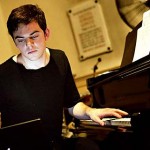
Muhly along with Los Angeles Master Chorale conductor Grant Gershon will take part in a Q&A session – where Muhly will demonstrate how he creates his compositions with GarageBand on his MacBook Pro. The talk will end with a performance by members of the Los Angeles Master Chorale featuring two works from “A Good Understanding” and two related works, “Like as the Hart” and “Wayfaring Stranger”.
John Clare spoke with Muhly about the works and event: mp3 file
Nico Muhly and Los Angeles Master Chorale conductor Grant Gershon appear at the Santa Monica Apple Store on Wednesday, September 8, 7:00 p.m.
Bonus – listen to the rest of the conversation as Muhly interviews Clare: mp3 file
Rite
Simon Bolivar Youth Orchestra of Venezuela; Gustavo Dudamel, conductor
Deutsche Grammophon CD

True, Stravinsky’s Sacre du Printemps is a watershed work. It serves as many a classical listener’s jumping off point when first exploring Twentieth Century repertoire. But can a work, no matter how seminal, have too many recordings? Can it get programmed so often on concerts that it loses its zing?
I have several recordings of the piece myself, but I’d begun to wonder in the past couple years whether the Rite was in danger of being overexposed. And I’m not the only one…
Enter young conductor Gustavo Dudamel and his even younger colleagues from the Simon Bolivar Youth Symphony Orchestra of Venezuela. Their version of the Rite is viscerally powerful, rhythmically muscular, and impressively wide in its dynamic range. After getting a bit burnt out by the piece and its attendant folklore, I’m refreshed by hearing Dudamel’s rendition.
In a clever programming touch, the Stravinsky is paired with Silvestre Revueltas’ La Noche de los Mayas. Originally a 1939 film score, a concert suite of the work was only fashioned some two decades after Revueltas’ death. Latin dance signatures and melodic inflections are offset by virtuosic percussion writing, including some cadenzas that help to make evident the musical kinship between Rite of Spring and La Noche de los Mayas.
The sociocultural resonances are obvious as well. It might seem gruesome to pair works based on their common interest in human sacrifice, but Rite restores the vitality and bite of early modernism’s interest in still-earlier primitivism.
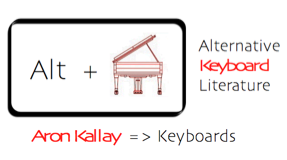
We may have missed the first volleys of southern California’s MicroFest — concerts devoted to tunings other than our standard, boring old 12 steps to the octave — but there’s still plenty of time to get your octave-tweak on; events will be running all the way to the end of June. Composers represented include Cage, Harrison, Partch, Crumb, Lachenmann, Tenney, Alves, Corigliano, Gosfield, Haas, Ives, Wadle, Schweinitz, McIntosh, Kriege, etc. etc… Quite a constellation of stars. For all the details head over to their website.
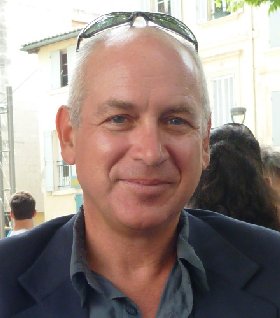 But I wanted to draw your attention to the MicroFest concert happening this weekend, since it involves an old pal and S21 alum. On Saturday April 24, 7:00 PM at the Steinway Piano Gallery (314 N. Robertson Blvd., West Hollywood), pianist Aron Kallay with Grace Zhao will be giving a concert of music for “quartertuned+” pianos. In addition to pieces by Charles Ives, John Corigliano, Bill Alves, Georg Haas, Annie Gosfield and my internet friend “Down Under”, Kraig Grady, Kallay will be giving the premiere live performance of Jeff Harrington‘s monstrously difficult Prelude #3 for 19ET Piano. It’s taken a lot of years for someone to step up and take on one of Jeff’s preludes, many of which we’ve known and loved for years only through Jeff’s own MIDI realizations. It’s going to be fun, I’m telling you. You can hear part of the piece in this KPFK interview with Kallay.
But I wanted to draw your attention to the MicroFest concert happening this weekend, since it involves an old pal and S21 alum. On Saturday April 24, 7:00 PM at the Steinway Piano Gallery (314 N. Robertson Blvd., West Hollywood), pianist Aron Kallay with Grace Zhao will be giving a concert of music for “quartertuned+” pianos. In addition to pieces by Charles Ives, John Corigliano, Bill Alves, Georg Haas, Annie Gosfield and my internet friend “Down Under”, Kraig Grady, Kallay will be giving the premiere live performance of Jeff Harrington‘s monstrously difficult Prelude #3 for 19ET Piano. It’s taken a lot of years for someone to step up and take on one of Jeff’s preludes, many of which we’ve known and loved for years only through Jeff’s own MIDI realizations. It’s going to be fun, I’m telling you. You can hear part of the piece in this KPFK interview with Kallay.
 Then on Sunday April 25th, back NYC -way, our long-time contributor Elodie Lauten is celebrating the 2-CD release of a whole passel of her piano music from the last 30 years, PIANO WORKS REVISITED (Unseen Worlds), with a performance at the Gershwin Hotel (4PM, 7 East 27 Street, $10). Elodie herself will perform the Variations on the Orange Cycle (cited by Chamber Music America as among the 100 best works of the 20th century), and some of the early piano tunes that featured on WNYC as early as 1981; also the Sonate Modale, released for the first time on these CDs. The Gershwin Hotel main lobby provides a beautiful grand piano and a colorful and elegant environment for this special venue, and there’ll be refreshments. So come on out and cheer the home team!
Then on Sunday April 25th, back NYC -way, our long-time contributor Elodie Lauten is celebrating the 2-CD release of a whole passel of her piano music from the last 30 years, PIANO WORKS REVISITED (Unseen Worlds), with a performance at the Gershwin Hotel (4PM, 7 East 27 Street, $10). Elodie herself will perform the Variations on the Orange Cycle (cited by Chamber Music America as among the 100 best works of the 20th century), and some of the early piano tunes that featured on WNYC as early as 1981; also the Sonate Modale, released for the first time on these CDs. The Gershwin Hotel main lobby provides a beautiful grand piano and a colorful and elegant environment for this special venue, and there’ll be refreshments. So come on out and cheer the home team!
Alex Ross gives a rundown of upcoming seasons at both the New York and Los Angeles Philharmonic Orchestras. There’s a fair amount of contemporary work on the bills from both coasts, though I can’t help feeling the “biggest” events have a somewhat buddy-buddy feel.
Head’s up on a couple things this coming week that caught my eye:
 WPRB’s Marvin Rosen is doing a special edition of his Classical Discoveries radio show this Wednesday, Jan. 27th. From 5:30 until 11:00 AM EST. Titled “East Meets West“, the entire five-and-a-half hours will be devoted to works by Middle and Far Eastern Composers, as well as to works by Western composers inspired by these regions. A special treat in the 10-o’clock hour will be the world premiere broadcast of the Sonata for solo viola Op. 423 (1992) by Alan Hovhaness (1911-2000), performed by Christina Fong (from a brand-new OgreOgress release). Then from 11AM until 1PM, Marvin’s guest will be composer/improviser/percussionist Lukas Ligeti. A swell time all around, and as always no matter where you are your computer can bring you the broadcast live.
WPRB’s Marvin Rosen is doing a special edition of his Classical Discoveries radio show this Wednesday, Jan. 27th. From 5:30 until 11:00 AM EST. Titled “East Meets West“, the entire five-and-a-half hours will be devoted to works by Middle and Far Eastern Composers, as well as to works by Western composers inspired by these regions. A special treat in the 10-o’clock hour will be the world premiere broadcast of the Sonata for solo viola Op. 423 (1992) by Alan Hovhaness (1911-2000), performed by Christina Fong (from a brand-new OgreOgress release). Then from 11AM until 1PM, Marvin’s guest will be composer/improviser/percussionist Lukas Ligeti. A swell time all around, and as always no matter where you are your computer can bring you the broadcast live.
 If you happen to be on the other coast that same day (Jan. 27th), you’re in for a treat if you head to the Pasadena Central Library (Donald R. Wright Auditorium, 285 E. Walnut St.) at 6PM PST, for a concert presented by Cellogrill (über-cellist Jessica Catron) and the Pasadena Creative Music Series. The concert opens with the world premiere of composer Cat Lamb’s Branches for just-intoned female choir assembled especially for this occasion. Next up, MISSINCINATTI follows with folk songs of land and sea; forgotten tales about fantastical crocodiles, maritime ghosts and work in the mines illuminated before your very eyes with the assistance of many special musical guests. And finally, the compositions of RATS can confound and delight like a musical retelling of The Wizard of Oz by Captain Beefheart. And all this for the princely sum of FREE.
If you happen to be on the other coast that same day (Jan. 27th), you’re in for a treat if you head to the Pasadena Central Library (Donald R. Wright Auditorium, 285 E. Walnut St.) at 6PM PST, for a concert presented by Cellogrill (über-cellist Jessica Catron) and the Pasadena Creative Music Series. The concert opens with the world premiere of composer Cat Lamb’s Branches for just-intoned female choir assembled especially for this occasion. Next up, MISSINCINATTI follows with folk songs of land and sea; forgotten tales about fantastical crocodiles, maritime ghosts and work in the mines illuminated before your very eyes with the assistance of many special musical guests. And finally, the compositions of RATS can confound and delight like a musical retelling of The Wizard of Oz by Captain Beefheart. And all this for the princely sum of FREE.